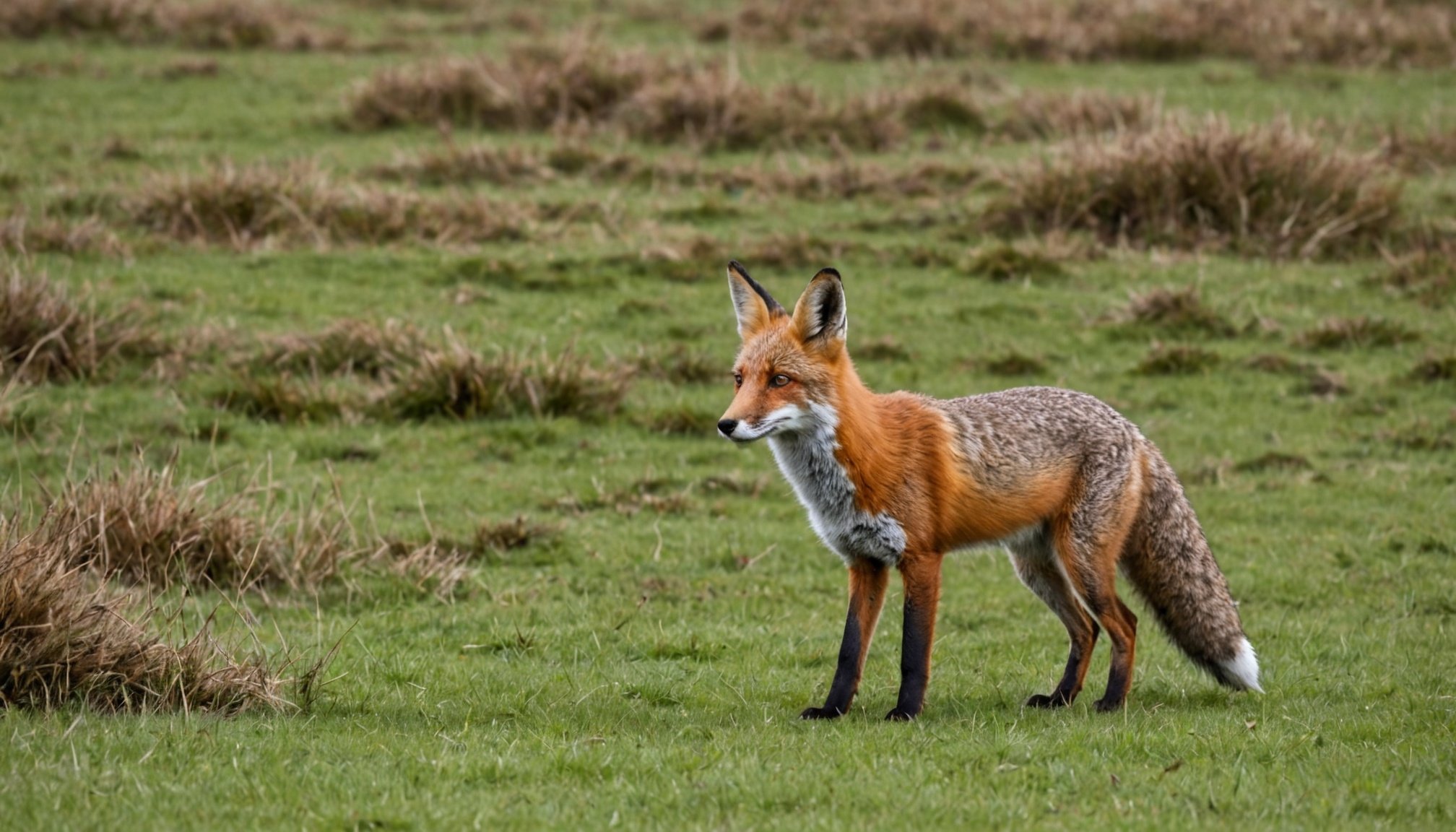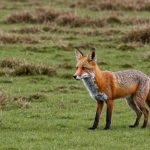New UK hunting regulations are sparking debate about their potential effects on wildlife safety, specifically for foxes and hares. As these new laws come into effect, it is essential to examine how they reshape hunting practices and their implications for animal welfare. Understanding the balance between conservation efforts and traditional hunting practices can guide future discussions, ensuring that protection measures align with humane treatment of these iconic species. Explore the complexities of these regulations and their direct impact on the safety of foxes and hares.
Overview of the New UK Hunting Regulations
The new UK hunting regulations bring significant changes aimed at enhancing wildlife protection. These legislative changes reflect a growing commitment to preserving biodiversity and ensuring sustainable hunting practices. A notable update includes stricter licensing requirements for hunters, designed to ensure that only qualified individuals can engage in hunting activities. Additionally, there are new restrictions on hunting certain species during specific times of the year, aligning with breeding seasons to prevent population declines.
A lire également : Exploring the Benefits and Drawbacks of the UK”s Badger Cull: A Comprehensive Analysis
The timeline for the implementation of these regulations is structured to allow gradual adaptation. The initial phase began in early 2023, focusing on public awareness and education. Full enforcement is expected by mid-2024, providing stakeholders ample time to comply with the new rules.
The primary objectives of these updated regulations are multifaceted. Firstly, they aim to reduce illegal hunting activities by increasing penalties and enhancing monitoring systems. Secondly, they seek to protect endangered species by regulating hunting quotas and seasons. Lastly, the regulations promote ethical hunting practices, ensuring that hunting contributes positively to ecosystem management rather than detracting from it.
A lire en complément : Exploring the Effects of New UK Wind Farms on Local Bat Populations: A Closer Look
These changes represent a significant shift towards more responsible and sustainable wildlife management in the UK.
Implications for Foxes and Hares
The fox population and hare population are central to the discussion surrounding the new UK hunting regulations. Recent statistical data indicates that these species have experienced fluctuating trends due to various environmental and human factors. Foxes, for example, have seen a slight increase in urban areas, while hares continue to face challenges in maintaining stable numbers due to habitat loss.
The updated regulations are expected to significantly impact hunting practices concerning these animals. By imposing stricter controls and aligning hunting seasons with breeding periods, the rules aim to stabilise populations. This approach is designed to prevent further declines, particularly in the hare population, which is more vulnerable due to its specific habitat requirements.
Wildlife safety is a primary concern addressed by these changes. While the regulations offer potential benefits such as enhanced protection and population recovery, there are also risks. For instance, if not properly enforced, illegal hunting could persist, undermining efforts to safeguard these species. Furthermore, the balance between protecting wildlife and allowing sustainable hunting practices remains delicate. It is crucial to monitor the effects of these regulations closely to ensure they achieve the desired outcomes for both foxes and hares.
Expert Opinions on the Regulations
In the wake of the new UK hunting regulations, wildlife experts and conservationists have voiced diverse perspectives. According to expert analysis, these changes are seen as a progressive step toward safeguarding biodiversity. Wildlife biologists highlight the importance of aligning hunting seasons with breeding periods, noting that this could significantly aid in population recovery for vulnerable species like hares.
Conservationists emphasize the potential of these regulations to curb illegal hunting activities. They argue that increased penalties and monitoring systems are likely to deter poaching, thereby protecting endangered species. However, they caution that without proper enforcement, these measures might not achieve the desired impact.
Animal rights organizations have also weighed in, expressing cautious optimism. They applaud the focus on ethical hunting practices but stress the need for continuous assessment to ensure that the regulations are effectively balancing wildlife protection with hunting interests.
The long-term implications of these regulations are still a topic of debate. Experts suggest that if implemented successfully, they could lead to more stable ecosystems. However, they also warn of unintended consequences, such as potential shifts in predator-prey dynamics, which require ongoing research and adaptation.
Public Sentiment and Engagement
The introduction of the new UK hunting regulations has sparked diverse public opinion. Many individuals express support, viewing the changes as necessary for wildlife conservation. Others, however, voice concerns about the impact on traditional hunting practices. This split in sentiment highlights the complex relationship between conservation efforts and cultural traditions.
Community involvement has been pivotal in shaping these discussions. Various community initiatives have emerged, focusing on wildlife protection and education. For instance, local groups have organised workshops to inform the public about the benefits of the new regulations. These initiatives not only foster awareness but also encourage active participation in conservation efforts.
Wildlife advocacy organisations have played a crucial role in promoting these changes. They utilise platforms like social media to engage the public, raise awareness, and mobilise support. Social media has proven to be a powerful tool in shaping public discourse, allowing advocates to reach a wider audience and facilitate discussions on the importance of sustainable hunting practices.
Through these efforts, the public is becoming more informed and involved in wildlife conservation, demonstrating a growing commitment to protecting biodiversity while balancing the needs of hunters and conservationists.
Statistical Data on Wildlife Safety
Understanding the impact of hunting on wildlife requires a thorough examination of wildlife statistics. Recent studies have provided insightful ecological analysis, revealing the effects of hunting on various species. Data indicates that certain populations, such as hares, have been particularly sensitive to hunting pressures, necessitating regulatory intervention.
Recent Studies and Surveys
Recent hunting impact data shows a notable shift in wildlife safety. Surveys conducted before and after the implementation of the new regulations highlight changes in population dynamics. For instance, fox numbers have stabilized in rural areas, while urban fox populations continue to rise. This suggests that the regulations may be effective in certain contexts, although further monitoring is required.
Human-Wildlife Interactions
Data on human-wildlife interactions suggests that conflicts have decreased slightly since the introduction of the regulations. This reduction is attributed to better-managed hunting practices and increased public awareness. However, isolated incidents continue to occur, indicating that ongoing education and enforcement are crucial.
Overall, the ecological analysis underscores the importance of these regulations in promoting wildlife safety. By examining recent wildlife statistics, stakeholders can better understand the hunting impact and refine strategies for sustainable wildlife management.
Case Studies of Hunting Practices
Exploring hunting practices across various UK regions reveals intriguing insights into how local contexts shape outcomes. Regional differences significantly influence these practices, with each area presenting unique challenges and successes.
Regional Differences in Hunting Practices
In Scotland, for instance, the rugged terrain and vast wilderness demand specific hunting techniques and tools, which have evolved over time. Conversely, in the South of England, hunting is more regulated due to denser populations and closer proximity to urban areas. These regional differences highlight the necessity for tailored approaches to enforcement and compliance.
Successes and Challenges
Case studies illustrate both triumphs and obstacles in implementing the new regulations. In Northern Ireland, community-led initiatives have successfully curbed illegal hunting, showcasing the power of local engagement. However, in parts of Wales, enforcement remains challenging due to limited resources and remote landscapes, which can hinder monitoring efforts.
Evaluation of Enforcement and Compliance
The effectiveness of enforcement varies across communities. In some areas, robust compliance has been achieved through collaborative efforts between local authorities and hunters. Yet, other regions struggle with consistent enforcement, underscoring the need for continued adaptation and resource allocation to ensure the regulations meet their intended goals.
Ecological Impacts of the Regulations
The introduction of new UK hunting regulations is expected to have profound effects on the ecological balance. By restricting hunting practices, these regulations aim to foster a more harmonious relationship between humans and nature. This shift is crucial for maintaining biodiversity, as it helps protect various species from becoming endangered or extinct.
Impact on Biodiversity and Species Interactions
The regulations are designed to mitigate the environmental impact of hunting by controlling the number and timing of hunts. This approach ensures that species have ample time to reproduce and recover, thus maintaining their populations. By aligning hunting seasons with breeding periods, the regulations help preserve crucial interactions among species, such as predator-prey dynamics, which are vital for ecosystem stability.
Long-term Ecological Forecasts
Current data suggests that if the regulations are enforced effectively, they could lead to positive long-term ecological outcomes. These include healthier wildlife populations and more resilient ecosystems. However, achieving these goals requires ongoing monitoring and adaptation. As the regulations evolve, it is essential to assess their effectiveness continually, ensuring that they contribute to sustainable wildlife management and the preservation of biodiversity.
Related Conservation Efforts
Efforts to enhance wildlife protection in the UK are supported by a variety of conservation initiatives. These programs aim to safeguard habitats and promote biodiversity. Existing initiatives include habitat restoration projects that focus on rehabilitating ecosystems affected by human activities. These projects often involve reforestation, wetland restoration, and the creation of wildlife corridors to facilitate animal movement and genetic diversity.
Collaboration between hunters and conservationists is pivotal in these initiatives. Hunters, traditionally seen as adversaries of conservation, are increasingly participating in efforts to preserve wildlife. This partnership is built on mutual interests, such as maintaining healthy animal populations and ensuring sustainable hunting practices. By working together, hunters and conservationists can share valuable data and resources, leading to more effective conservation strategies.
Looking ahead, future initiatives are set to further enhance wildlife welfare. Planned projects include expanding protected areas and implementing advanced monitoring technologies to track animal populations. Additionally, educational programs aim to raise public awareness about the importance of conservation. These initiatives not only protect wildlife but also foster a culture of environmental stewardship, ensuring that future generations inherit a thriving natural world.
Conclusion: Future Directions in Wildlife Protection
The future of wildlife protection in the UK hinges on the continued evolution of regulations and the integration of hunting ethics. As society increasingly values biodiversity, potential changes in hunting regulations could include more stringent controls and innovative monitoring technologies. These advancements aim to balance ecological needs with traditional practices, ensuring sustainable interactions between humans and wildlife.
Ongoing debates about animal rights and conservation shape this regulatory evolution. Advocates argue for stronger protections, highlighting the ethical implications of hunting. They emphasize the need for regulations that not only preserve species but also respect their intrinsic rights. This dialogue is crucial for developing policies that reflect contemporary ethical standards.
Public engagement remains vital in advocating for wildlife safety. Individuals and communities are encouraged to participate in conservation efforts and voice their support for robust wildlife protection measures. By staying informed and active, the public can influence policy decisions, ensuring that future regulations prioritize ecological integrity and ethical considerations.
To secure a thriving natural environment, it is essential to foster a culture of awareness and responsibility. Through collaborative efforts, society can pave the way for a future where wildlife and human activities coexist harmoniously.














